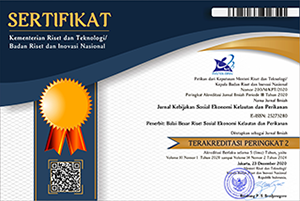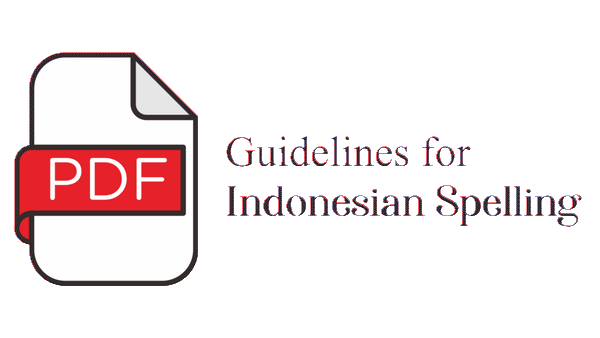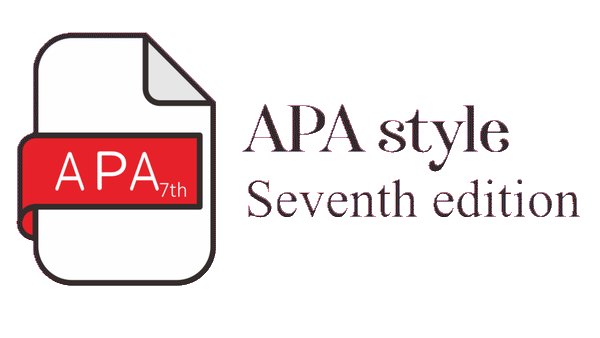EFEKTIVITAS ZONASI DALAM PENGELOLAAN PERIKANAN KARANG DI KAWASAN KONSERVASI PERAIRAN SELAT DAMPIER, RAJA AMPAT
Abstract
Kawasan Konservasi Perairan Daerah (KKPD) ditetapkan untuk berbagai tujuan, termasuk melindungi spesies dan habitat laut, melestarikan keanekaragaman hayati laut, memulihkan stok perikanan, mengelola kegiatan pariwisata, dan meminimalkan konflik di antara beragam pengguna sumber daya. Oleh karena itu, timbul pertanyaan apakah pengelolaan Kawasan Konservasi Perairan Daerah (KKPD) di Selat Dampier Raja Ampat telah dilakukan secara efektif untuk memperoleh hasil yang berkelanjutan serta meningkatkan status sosial ekonomi masyarakat yang ada di kawasan tersebut.Analisis penerapan zonasi dalam pengelolaan kawasan konservasi laut Selat Dampier diukur dengan memetakan kelimpahan dan biomasa ikan karang, memotret persepsi nelayan tentang zonasi serta menilai tingkat kepatuhan nelayan pada batas-batas zonasi. Penelitian ini dilakukan di kawasan konservasi Selat Dampir, Kabupaten Raja Ampat, Provinsi Papua Barat, antara November 2016 dan Oktober 2017. Data dikumpulkan dengan menggunakan metode survei, termasuk data primer dan sekunder. Metode transek sabuk, dilakukan pada kedalaman 3 m, digunakan untuk mengukur kelimpahan dan biomasa ikan. Responden adalah nelayan terumbu karang yang tinggal di Desa Saonek, Desa Yenbuba, Desa Friwen dan Desa Arborek. Data sekunder diperoleh dari beberapa sumber (Dinas Perikanan Kabupaten, BPS, jurnal ilmiah, dan laporan penelitian). Data dianalisis secara deskriptif dan metode tabulasi silang. Hasil penelitian menunjukkan bahwa sistem zonasi pada pengelolaan kawasan konservasi di perairan Selat Dampier, Raja Ampat dapat dikatakan cukup efektif terlihat dari kelimpahan ikan dan biomasa yang cukup tinggi pada zona inti dan zona wisata (sebagai Daerah Perlindungan Laut/DPL) dimana pada kedua zona tersebut nilainya 1.5 sampai 2 kali dibandingkan dengan zona perikanan (Non DPL). Rata-rata tingkat kesadaran dan kepatuhan nelayan untuk tidak melakukan penangkapan ikan di daerah zona inti dan zona wisata cukup tinggi yakni 95%, Persepsi sebagian besar nelayan mengekspresikan kesadaran lingkungan dan pengetahuan yang baik tentang kawasan konservasi.
Title: EFEKTIVITAS ZONASI DALAM PENGELOLAAN PERIKANAN KARANG DI KAWASAN KONSERVASI PERAIRAN SELAT DAMPIER, RAJA AMPAT
Marine Protected Areas (MPAs) are defined for various purposes, including to protect marine species and habitats, to conserve marine biodiversity, to restore fishery stocks, to manage tourism activities, and to minimize conflicts among diverse resource users. Therefore, question arises whether there has been effective management of the Marine protected Area in the Raja Ampat Dampier Strait in order to achieve sustainable results and improve the socio-economic status of its society. Analysis of the zoning system in the management of the Dampier Strait was measured by mapping the abundance and biomass of reef fish, capturing fishers’ perception towards zoning and assessing the level of fishers’ compliance at zoning boundaries. This research was conducted in the Dampir Strait conservation area, Raja Ampat District, West Papua Province, from November 2016 to October 2017. Primary and secondary data were collected through surveys. The belt transect method was carried out to a depth of 3 m to measure the abundance and biomass of fish. Primary data were collected from coral reef fishers living in Saonek Village, Yenbuba Village, Friwen Village and Arborek Village. Secondary data were taken from several sources (District Fisheries Service, BPS, scientific journals, and research reports). Data were analyzed descriptively and cross tabulated method. The results showed that the zoning system was effective to manage the conservation areas in the Dampier Strait waters, Raja Ampat since there are abundance of fish and high biomass in the core zone and tourist zo9ne (as Marine Protected Areas) with 1.5 to 2 times amount compared with the fisheries zone (Non DPL). The average level of awareness and average compliance of fishers to prevent themselves from fishing activities in the core zone and tourism zone is 95 %. Most fishers express high environmental awareness and good knowledge toward conservation areas.
Keywords
Full Text:
PDFReferences
Bennett N.J. & P. Dearden. (2014). Why local people do not support conservation: community perceptions of marine protected area livelihood impacts, governance and management in Thailand. Marine Policy, 44:107-116.
Buxton, C.D., K. Hartmann, R. Kearney & C. Gardner. (2014). When is spillover from marine reserves likely to benefit fisheries? PLoS ONE 9(9), e107032. doi:10.1371/journal.pone.
English, S., C. Wilkinson & V. Baker. (1997). Survey manual for Tropical Marine resources, Second edition. Australia Institute of Marine Science. Townsville: 390 p. 1997
Friedlander, A.M. (2001). Essential fish habitat and the effective design of marine reserves: Application for marine ornamental fishes. Aquarium Sciences and Conservation,3, 135–150.
Froese, R. & Pauly, D. (2000). FishBase 2000: concepts, design and data sources. ICLARM, Los Bafios, Laguna, Philippines. 344 p.
Giyanto, P. Mamby, N. Dhewany, M. Abrar & M.Y. Iswari. (2017). Indeks Kesehatan Terumbu Karang Indonesia. Coremap CTI.P2O LIPI. 99 Hal.
Gay L.R. & P.L. Diehl. (2011). Research Methods for Business and Management. 679 p. Macmillan Publishing Company.
Halpern, B.S., S.E. Lester & J.B Kellner. (2010). Spillover from marine reserves and the Replenishment of fished stocks. Environ. Conservation,36, 268-276. Keputusan Menteri Kelautan dan Perikanan Republik Indonesia Nomor 36/Kepmen-KP /2014, tentang Kawasan Konservasi Perairan Kepulauan Raja Ampat Kabupaten Raja Ampat di Propinsi Papua Barat. Ditetapkan di Jakarta (Tanggal 15 Juli 2014)
Kincaid, K.B., G. Rose, & H. Mahudi. (2014). Fishers’ perceptions of a multiple-use marine protected area: Why communities and gear users differ at Mafia Island, Tanzania. Marine Policy, 43:226-235.
Leleu K, F. Alban, D. Pelletier, E. Charbonnel, Y. Letourneur & C.F. Boudouresque. (2012). Fishers’ perceptions as indicators of the performance of marine protected areas (MPAs). Marine Policy. 36:414-422.
Machumu, M.E. & A. Yakupitiyage. (2013). Effectiveness of Marine Protected Areas in Managing the Drivers of Ecosystem Change: A Case of Mnazi Bay Marine Park, Tanzania. AMBIO. 42, 369–380, DOI 10.1007/s13280-0120352-8.
McCoy G.M.R., C.R. Dromard & J.R. Turner. (2010). An evaluation of Grand Cayman mpa performance: A Comparative Study of Coral Reef Fish Communities. Proceedings of the 62nd Gulf and Caribbean Fisheries Institute, November 2-6, 2009, Cumana, Venezuela. Page 2-9.
McClanahan, T.R., M.J. Marnane, J.E. Cinner & W.E. Kiene. (2006). A Comparison of Marine Protected Areas and Alternative Approaches to Coral-Reef Management. Current Biology. 16, 1408–1413. DOI 10.1016/j.cub.2006.05.062.
Muthiga, N.A. (2009). Evaluating the effectiveness of management of the Malindi–Watamu marine protected area complex in Kenya. Ocean & Coastal Management. 178-192.
Pomeroy R.S., J.E. Parks & L.M. Watson. (2004). How is your MPS doing?. A Guide book natural and social indicator for evaluating MPA Management effectiveness. IUCN. 216 p.
Pina-Amargós F., G. González-Sansón, F. MartínBlanco & A. Valdivia A. (2014). Evidence for protection of targeted reef fish on the largest marine reserve in the Caribbean. PubMed, DOI 10.7717/peerj.274
Rees, S.E., L.D. Rodwell, S. Searle & A. Bell. (2013). Identifying the issues and options for managing the social impacts of Marine Protected Areas on a small fishing community. Fisheries Research 146:51-58.
Stobart, B., R. Warwick, C. González, S. Mallol, D. Díaz, O. Reñones & R. Goñi. (2009). Longterm and spillover effects of a marine protected area on an exploited fish community. Mar Ecol Prog Ser, 384, 47–60, doi:10.3354/meps08007.
Widyatun. (2011). Peran Masyarakat dalam pelestarian terumbu karang dan dampaknya terhadap peningkatan kesejahteraan. Jurnal Kependudukan Indonesia. Vol VI.No.2. 19 hal.
Widyatun, S.A. (2011). Penyelamatan Terumbu Karang di Kabupaten Raja Ampat: Partisipasi dan Kesejahteraan Masyarakat. Jakarta: Leuser Cipta Pusataka, Coremap-LIPI.
Wilson, J. & A. Green. (2009). Metode Pemantauan Biologi Untuk Menilai Kesehatan Terumbu Karang dan Efektivitas Pengelolaan Kawasan Konservasi Laut di Indonesia. The Nature Concervancy, Indonesia Marine Program. Versi 1.0.
Wouthuyzen, S., Y. Lorwens & F.D. Hukom. (2016). Efektifkah daerah Perlindungan Laut (DPL), mengkonservasikan ikan karang ? Studi kaus di Kabupaten Biak-Numfor dan Supiori, Papua. Jurnal Penelitian Perikanan Laut. Vol 22. 271-284.
DOI: http://dx.doi.org/10.15578/jksekp.v9i2.7661
Indexed by:
---------------------------------------------------------------------------------------
Published by
Research Center for Marine and Fisheries Socio-Economic
in collaboration with
Indonesian Marine and Fisheries Socio-Economics Research Network
This work is licensed under a Creative Commons Attribution-NonCommercial-ShareAlike 4.0 International License.













3.png)











